Classic album: Adamski on Doctor Adamski's Musical Pharmacy
Adamski takes us through each track on his classic album
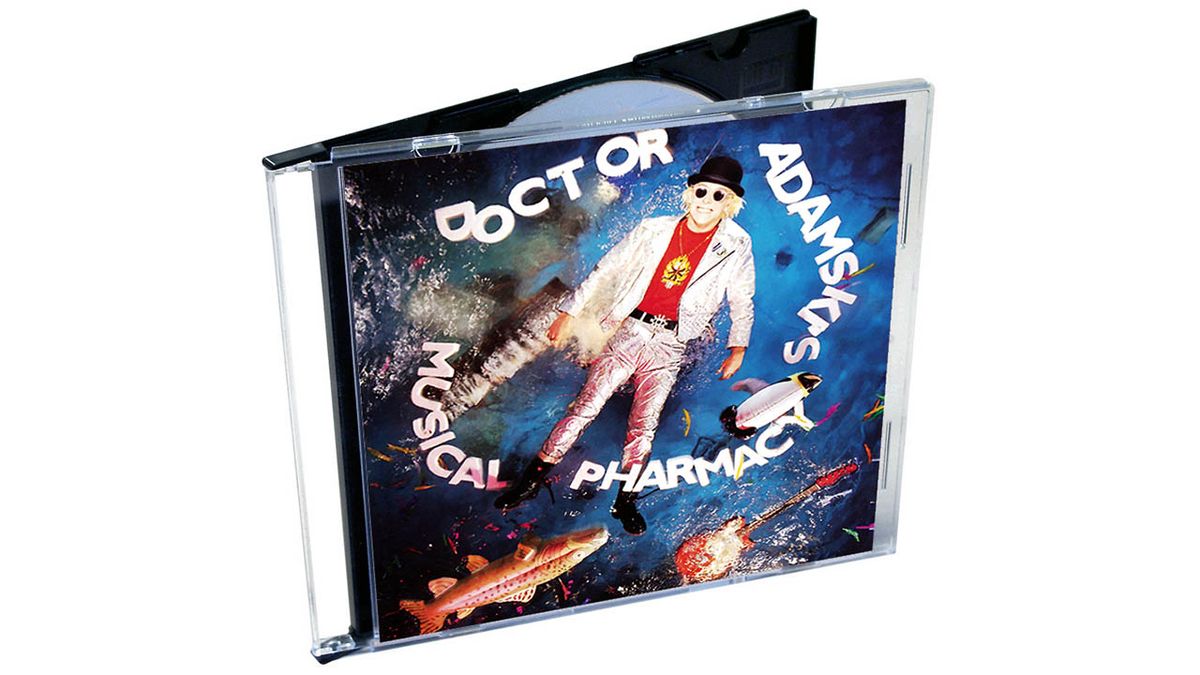
It’s the dawn of a new decade, and Adamski is being marched back to the studio to write a brand-new album. He’d only just handed in Liveandirect – a sublime collection of UK rave and Ibiza club sets, captured across the mythical summer of ’89.
That was fun. Partying shoulder to shoulder with the Happy Mondays, and living life to the fullest (on and off the decks) at legendary clubs like Amnesia. The last thing he wanted to do was come down, and shut himself in the studio with the pressure of magically coming up with a smash-hit pop album. Unfortunately he’d just made the track Killer, and it was a runaway success that demanded an album to be packaged and sold on.
“It was all a bit rushed,” says Adamski. “I was overwhelmed by my sudden success. I was 21, and had this big hit. I’d only just done my first album, and shot my wad on it...”
I was overwhelmed by my sudden success. I was 21, and had this big hit. I’d only just done my first album, and shot my wad on it...
Killer had come to him like a gift in his studio in London - then organically developed through live gigs, before vocalist Seal added his magic, unhurried, until just the right phrases and tones fitted.
For the album, however, Adamski was whisked off to a studio in LA that cost a thousand dollars per day. He had no new ideas. No demos. And the pressure of MCA label reps standing over his shoulder, tapping their watches, as he burned through their money.
“It was ridiculous that I was even there,” he says. “I’d get better sounds making cassettes on my shitty little Argos hi-fi system at home! I’d go to these 24-track studios, with these smoke and mirrors engineers, because that’s what the record company said to do. And they’d given me the biggest chunk of money I’d ever seen in my life.”
Frazzled by the ‘Second Summer of Love’, lost in gigantic recording studios, and pulling inspiration from anywhere and everywhere, he’d turn in an album that would win him countless new fans and lose him old ones. But, ultimately, it would be the sound of that new decade, for him, and many scrappy dance music outlaws that followed...
Get the MusicRadar Newsletter
Want all the hottest music and gear news, reviews, deals, features and more, direct to your inbox? Sign up here.
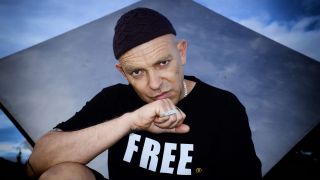
Flashback Jack
"I plagiarised a bit of the ‘Shake ‘n’ Vac’ advert for this one. [Sings] ‘You do the Shake ‘n’ Vac, and put the freshness back...’ Things would just pop into my head...
"I’d also say that Flashback Jack was a slightly angry song as well. The journalists had hurt my feelings by not saying that everything I did was amazing [laughs], so this was me going ‘na na na na nah’ to them in the lyrics.
"Larry Heard did a remix of this, which came out really well. He was one of my heroes, so it was really nice to hear that."
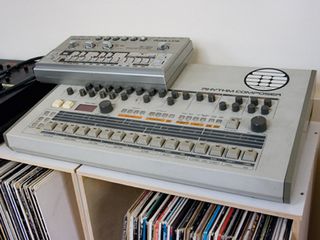
It all started in my flat in York Way, Kings Cross, London. I had the Roland TR-909 (pictured above), Ensoniq SQ-80 sequencer/synth, and the Casio FZ-1 sampler from the first album.
The main thing was the SQ-80. I didn’t really know what I was doing, though, so I’d end up doing things that you weren’t supposed to do, like transposing something five octaves off the end of the keyboard – it’d go into a weird scale that was kinda alien and odd – that’s how that ‘squiggly’ acid sound on Killer came about. That started as a preset ‘bell’ sound, and I just fiddled around with it and it became that.
By the end we were up in a studio on the Sunset Strip [West Hollywood] called Summa, I think. I used their desk and stuff, but I took my own gear in there. My brother was helping me. I didn’t know what I was doing in these big thousand-dollar-a-day studios. It really was a ridiculous waste of money. I genuinely would get better results on my home hi-fi!
Eighth House
"This track was thrown together. I put down sections and the engineer edited it together with tape and razor blades [laughs]. How’d you learn such a thing? It’s so difficult to do and, of course, totally unnecessary these days.
"I loved Mantronix, by the way. I really, really loved Mantronix [laughs]. I loved his 909 programming, as well as Derrick May’s, and I’d try and emulate that. It’s because of them that I used the 909 so much. I loved the sound and feel of that.
"I also had this rack-mounted module thing to get the sound that feels like a cross between a bass and a tom tom on here."
Future Freak
"The sax is the SQ-80. Nearly all the sounds on the album were from the Ensoniq SQ-80.
"The phat pad sounds came off this rackmount thing that I really can’t remember the name of. It was 30 years ago! [laughs]. I find it weird that I can remember anything at all.
"This is me singing on the track. I don’t really know what I was trying to do. I was a singer before I was doing the rave thing. I was one of two singers in Diskord Datkord. I was just trying to get back to that. I just wanted to be a performer."
Squiggy Groove
"This has an upright bass sound. Not from the SQ-80 - you can’t get a sound so organic from that. It would have been some preset doing a ‘walking disco’ line over some half-tempo drums.
"I met the guys from Modeselektor, years later, when I was living in Berlin and they said that I was doing this half-step thing years before anyone. I wasn’t trying to be clever or anything. I just happened to try it and it worked.
"It was supposed to be called Squidgy Groove - that’s what I called my girlfriend at the time, but the label misspelled it. I don’t think there is such a word as ‘squiggy’."
Soul Kitsch Inc
"The Doors were a big influence on me. I was a bit of a twat, to be honest, to think I could do a cover of one of their songs [Soul Kitchen].
"I went and recorded it in the same studio [Sunset Sound Recorders. Hollywood, California] that The Doors did their first album in. I got blind drunk and stood where Jim Morrison stood and did a Doors song.
"All that shit was me indulging myself. It went over the heads of the people who were into me in the first place, who put me in that position. I’m sorry for that... but I was 21."
Killer
"I made the beat in my bedroom and the perception of time felt altered, for some reason. The whole thing probably took about 15 minutes to put together. The bassline just came to me – through my little nicotine-stained fingers doing two-finger playing.
"I probably debuted it at the closing party of Amnesia in Ibiza, late summer ’89. I started performing it as an instrumental. Then around that time I met Seal. I’d heard his voice on a tape he’d given my flatmate (and MC) to pass on to me. I was keen to have a voice like that on my music. He had this amazing voice."
Space Jungle
"This was the follow up to Killer. I think it really threw people. One minute I’d got this cool, tall, black, leatherman [laughs], singing with this amazing powerful voice. Then it was like, ‘Right! I’m gonna have a go.’ I’m singing Elvis lyrics over the top of electronic stuff - it was not good business sense, but I was pleased that I’d done that, artistically.
"Now I have this other project, Sonny Eriksson. I make beats in my laptop and sing rockabilly style. More than Space Jungle, which was just a random skinny white kid singing Elvis. That was the seed of this thing now, though."
Future Freak (Supernova Bossanova)
"I’d do stuff like sample the drums off a toy keyboard, with those little preset patterns. For this track I sampled a bossanova beat off one - anything goes.
"In Ibiza in the late ’80s everything was eclectic. You’d be out and hear the theme music from Hill Street Blues, then Gipsy Kings or Aretha Franklin. Then Soul II Soul, mixed in with Belgian new beat - which was a really dark and sleazy techno flowing thing - then acid house. That gave me the green light to be as eclectic and diverse as my tastes were when it came to producing this album."

Everything Is Fine
"When I used to perform live with Seal the music of this track was used for Future Love Paradise (which would be the second single off his solo album). He used to sing his lyrics over this.
"I took the chorus from the film Eraserhead, from Lady in the Radiator. She sings, ‘In heaven everything is fine’.
"I got my then girlfriend, Natalie Williams, to sing it. She’s the mother of my eldest daughter. I met her on a rave on a boat in 1989."
I Want You Back
"This was gonna be another one of my cheesy pop songs, but someone said that they knew [the old-school rapper] Kurtis Blow. We got in touch and I asked if he wanted to do a track, and gave him this one. I simply took my vocals off it and we put his on.
"That beat has a sort of swingy, shuffle thing going on. He came to the studio in LA to lay his parts down. I was quite struck by him. It was so great to have him on a track. My group before this rave stuff [Diskord Datkord] was heavily influenced by rap."
N.R.G. Symphony in F Minor
"This was another single and based off the riff of my older track, N-R-G. This version was the direction that I would go in when I played it live. I just added more bits.
"I really feel that I was anointed with that riff, which may sound pretentious, but I just shut my eyes and played something into the sequencer, just to see what happened, and it came out.
"That riff is important to me. It was that riff that drew Seal to want to work with me. The riff that drew Paul Oakenfold in, and Alfredo, and got me playing in Amnesia. That riff is my signature fanfare."
Pipe Groover
"This was a favourite of the A&R man, Paul Doggett, who sadly passed away a few years ago. He was the one guy who I had on my side.
"He wasn’t happy that I went to LA to record, because he wanted to be there to pop into the studio as I was making the album. If he’d have been able to stay more involved we wouldn’t have ended up with a half-arsed Elvis cover version asa follow up to Killer.
"He really liked this track. It was called Pipe Groover because it had a pipe sound on there - not very imaginative [laughs]."
Space Jungle (Earthquake Mix)
"This was off a 12-inch. A lot of ‘the scene’ didn’t really like the way I’d gone, but I heard Andy Weatherall would play a version, and it might have been this.
"I was quite happy with that, as I really loved his work. It was like, ‘Thank you! At least someone I respect gets it, and doesn’t think I’m some kind of c*nt.’
"The rap is by my dear friend Ricky (RIP). He was the MC in Amnesia. We were staying in Alfredo’s farmhouse and became close friends. He’d go on to do stuff with The KLF as Ricardo da Force [Last Train To Trancentral].”
Over Killer
"This is another version of Killer. It has a different bassline, but Seal’s still on it. It’s hard to remember exactly what went into this one - I’ve done so many versions of this track, live, over the years.
"Vocally, I was trying to get a Led Zeppelin, bluesy thing, out of Seal. He had lyrics that just fit, but just verses. There was no ‘Solitary brother’ chorus. As far as I was concerned, the chorus was the strings pads and bells melody, but the A&R at MCA said we needed a chorus, so we came up with that for the single.
"It all fell together like it was meant to happen. A lot did."


Future Music is the number one magazine for today's producers. Packed with technique and technology we'll help you make great new music. All-access artist interviews, in-depth gear reviews, essential production tutorials and much more. Every marvellous monthly edition features reliable reviews of the latest and greatest hardware and software technology and techniques, unparalleled advice, in-depth interviews, sensational free samples and so much more to improve the experience and outcome of your music-making.
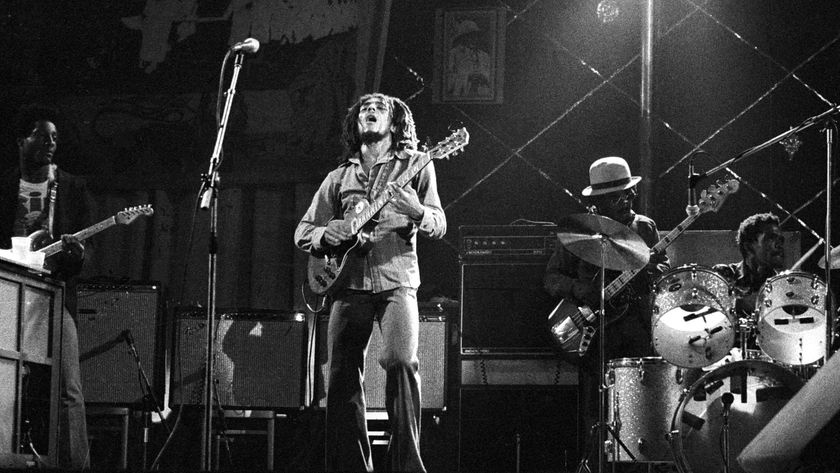
"Reggae is more freeform than the blues. But more important, reggae is for everyone": Bob Marley and the Wailers' Catch a Fire, track-by-track
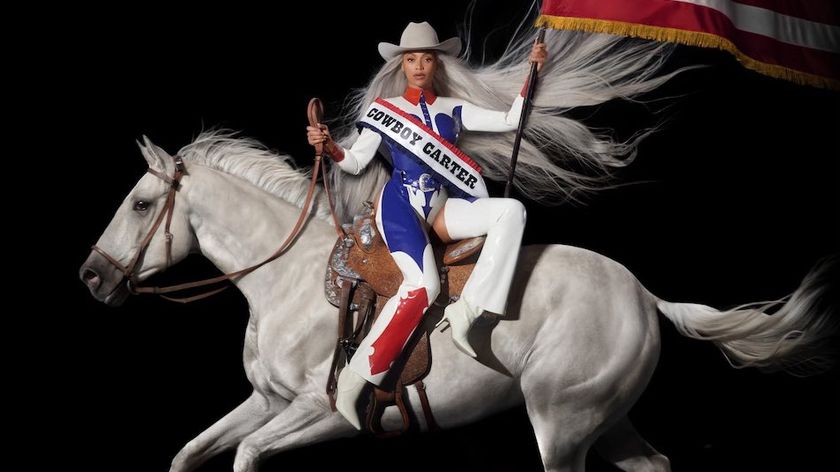
“Part of a beautiful American tradition”: A music theory expert explains the country roots of Beyoncé’s Texas Hold ‘Em, and why it also owes a debt to the blues










